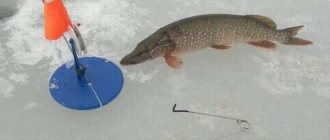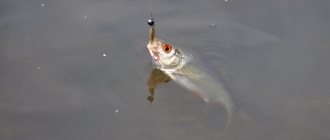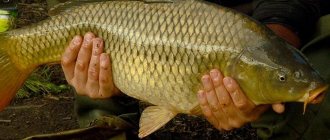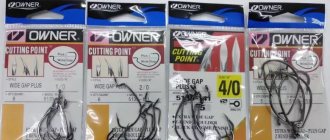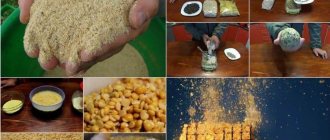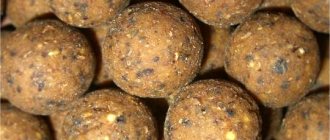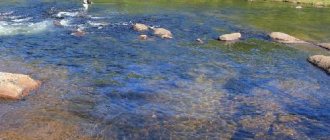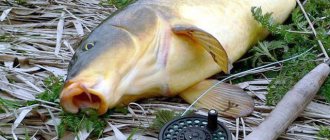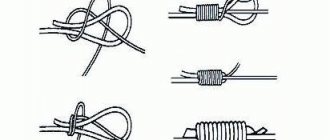The most important thing is to learn to understand how a hook works and what logic was involved in its production. At the stage of formation. In this article we will present the five most common models of hooks used in carp fishing today. Yes, there are many more of them in the assortment of carp companies, but if you familiarize yourself with these five logics, you will always be able to correctly evaluate any form, even absolute new items.
Basic concepts. How is the strength of the hooks achieved?
Two things. The first is forging. Its thickness. The thicker the bend, the stronger the hook. Currently, many manufacturers have consoles X, XS and the like. This means a thicker version of a particular model. If you are going into harsh fishing conditions, you may want to use a stronger hook.
The second is the production process itself. Due to minimal technical tolerances, almost all manufacturers have long made their hooks in Japan. Where each product undergoes a strictly defined alloying process to the highest standards. Almost all self-respecting companies that do not want to lose face in front of the consumer send their drawings to Japan.
Be sure to pay attention to the hardening method and where the hooks were made.
The most important rule
The shapes and sizes of hooks are extremely varied. We tried to describe the main brands and varieties in our Carptoday school. In today’s material, we tried not to speculate on specific models and manufacturers, but will try to reveal a fundamental principle that all fishermen should know. The most important thing is to understand how the hook penetrates the fish's lip.
The main factor is the angle between the tip of the tip and the eye of the hook. You can get an idea of how effectively a hook will pierce the lip by looking at the angle of the hook. What do we mean by this?
Place the hook vertically so that its eye touches the table. And then so that the entire sting lies on the table. Compare the resulting angle. The explanation is unlikely to be very clear for you, but we are attaching a photo below that will allow you to understand what we are talking about.
Hair fishing
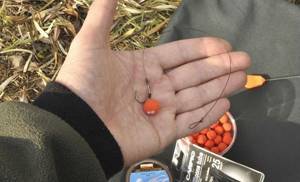
Fishing with a hair rig is a productive method of fishing for carp, carp, large crucian carp and other underwater inhabitants that feed from the bottom. Shows best results on closed ponds, lakes and quarries; can be used on medium and large rivers with flow.
When fishing with a hair rig, the carp does not see the hook separated from the bait. He confidently sucks it in and then the entire equipment, which is designed so that the single fish, once in the mouth, turns over with the tip down. When hooking, it bites into the lower lip of the fish, causing minimal injury to it.
Choosing a fishing spot
You can fish with a hairline rig at different points in the reservoir, but when choosing a catchable place, it is recommended to be guided by the general principles of searching for a specific type of fish. For example, carp and marketable crucian carp should be looked for in the following areas:
- local grooves and pits;
- pronounced “tables” located in the middle of a monotonous, unremarkable bottom topography;
- separately lying snags and sticks;
- edge close to the shore;
- zones near aquatic vegetation, both coastal and remote from the fisherman.
We recommend reading: Winter fishing with a balance beam
When fishing on the current, you need to choose holes, dumps, edges, various secluded points - places where the current brings food, which attracts bottom underwater inhabitants.
Adjusting the buoyancy of the nozzles
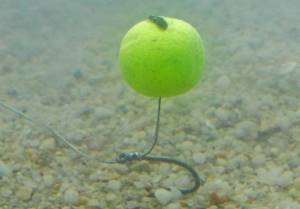
The buoyancy of baits in hair rigs plays an important role. Ideally, the boilie should be positioned at an angle close to 45 degrees to the hook in order to achieve the best results when fishing. When mounting the bait on the hair, you need to take into account the mood of the carp and the fishing conditions.
For example, on muddy muddy soil, when carp take from the bottom, it is necessary to use “snowmen”. This is a combination of floating and sinking baits, when in addition to boiled potatoes or dough, a pop-up boilie is attached. As a result, the equipment does not bury itself in the bottom and is clearly visible to the fish.
On hard ground, when the fish prefers to pick up bait from the bottom, but the angler only has floating boilies, they can be loaded with lead pellets. By selecting its weight, you can make the nozzle hang in the thickness or lie entirely on the ground.
Bite and hook
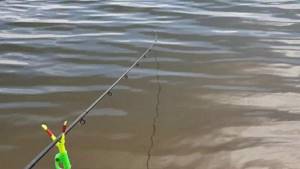
A fish that finds a bait at the bottom sucks it in. Along with it, the hook also gets into the mouth. Feeling resistance or a foreign body in the mouth, it tries to spit out the prey back, but the sting of the single fish, as a rule, digs into the lower jaw.
Based on the characteristics of the equipment, you can advise either not to hook at all, since the carp has already been caught and will be more confidently hooked at the moment of tension of the thread, or to perform a light wrist jerk for reliability. Once you feel the weight hanging on the other end of the line, you can begin to slowly fish.
Rule: the sharper the angle, the better the hook will pierce the lip of the fish!
It was to increase the efficiency of hooking a straight sting that hooks of the Curve Shank model were invented - with a curved eye. He is shown exactly in the photo below.
Classic hooks of the Wide Gape shape have an initially straight eye, but in pursuit of reducing the angle, many manufacturers began to make curved hook tips. There the angle turns out to be even smaller. But the penetration power is not as high as that of a hook with a straight tip. But if a hook with a curved sting gets caught and pierces the lip, then getting off is almost impossible.
Remember that we already wrote an article about how to avoid carp gatherings? In one of the first paragraphs we describe the dependence of the type of leader material on the bend of the hook tip. With a curved tip - soft driving materials, with a straight one - hard ones .
The article describes this point in detail.
Hooks for Chod Rig
The essence of the chod rig is to lift the equipment above the grass and other bottom obstacles using a floating nozzle. The nozzle is placed on a hard leader material, which, when bitten, will frighten it with its rigidity and the fish makes a sharp jerk, impaling itself on the sting. As a result, the fish does not get rid of the hook, but rather gets stuck on it.
Gradually, fishermen began to use a hook with the tip even bent on the contrary. And the angle of attack was leveled using a leader material with a strong memory. Now they are used for chod riga everywhere. Same as hook patterns.
The classic position of the bend is the one when the hook point is directed towards the middle of the leash. This is the starting position of the Chod rig.
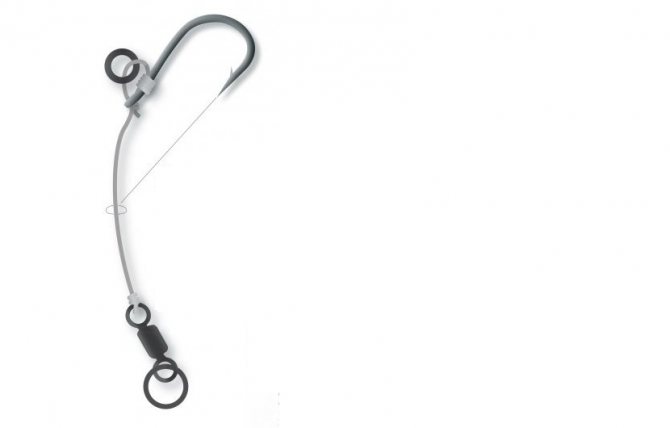
Please note that if you use the chod rig hook for other purposes, you will end up with a huge angle that will completely ruin your hooking moment. The bent eye is strictly suitable for a floating attachment on hard monomaterial!
Types of installation of hair equipment
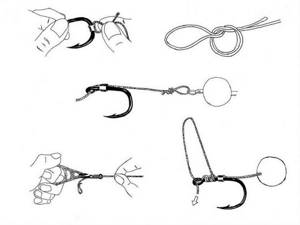
There are several ways to make a hair rig. Each type of installation, when assembled correctly, turns out to be catchy and productive. The choice is up to the fisherman, so you can attach a branch to:
- separate leash;
- regular knot;
- knotless installation;
- D-rig loop;
- ring;
- rotating circular installation.
Each knitting method is easy to learn. Let's look at them in detail.
Separate leash
The hair, made of any suitable material, is attached to the main line with a regular loop. At the same time, the eye of the hook does not allow him to jump down. A loop is knitted at the second free end of the outlet for attaching the bait. Installation ends with fixing it to the forend using a piece of nylon thread.
Recommended reading: How to catch pike perch with live bait
Knotless installation
A simple but catchy option, which is done like this:
- At the free end of the fishing line we make a loop for attaching the bait.
- We put a piece of heat-shrinkable tube of the required diameter on the fishing line so that it passes through the eye of the hook.
- We pull a loop into the eye, and from the second free end of the thread we knit a knot, fixing the hair.
- All that remains is to pull a piece of the tube onto the fore-end and warm it with a lighter to secure the hair.
When heating the thermophyte tube, it is necessary to protect the fishing line and the hook shank from deformation, trying not to damage the integrity and reliability of the tackle.
D-rig loop mounting
To assemble this equipment, it is customary to use fluorocarbon fishing line:
- We make a knotless fastening on the hook.
- We put a small ring on the free end.
- We pull the free line into the eye of the hook and attach a swivel to it.
- We fix the boilie using a piece of thin fishing line, which we fix in the ring.
This design ensures high mobility of the bait and allows the fish to pull it into its mouth at any angle.
Ring mounting
In this case, the hair is tied to the hook with a regular knot, and its extension is fixed on a ring that slides freely along the fore-end. Next comes the usual loop, nozzle and stopper. This setup is designed for catching passive and cautious carp.
Rotating circular mounting
We put two swivels on the hook. The first is designed for attachment to the main fishing line. The second is attached through a winding ring and fixed to the fore-end with stops. We tie a hair to it and attach the bait. We get a movable equipment that rotates in all directions.
Regular knot
The easiest way is in which the hook is tied to the fishing line with an ordinary knot, but the remaining tail is not cut off, and its length is initially selected so that a loop can be formed for attaching the bait to it. Recommended for beginner fishermen.
Hooks with extended shank
The extended shank helps the hook turn faster in the fish's mouth. Also, a wide shoulder allows for stronger serifing. It serves as a lever when hitting the carp's lip. That is, the longer the fore-end, the more aggressive the notching occurs.
Hooks come with a curved eye (for example, Mugga), or with a straight one (for example, Incizor). Here, during practice, the following recommendations were established - shanks for floating baits, and straight hooks for sinking ones, but with one caveat.
Look how small the angle of Muggi and other long curv shanks is
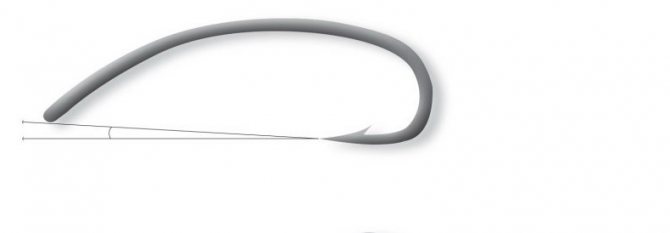
In the case of regular hooks with a long shank, like the Korda Longshank, or Gardner Incizor, for optimal hook performance, you should add a kicker, or lazy, or heat shrink, whichever is more convenient. You can read more about heat shrinkage here. If for other models of hooks heat shrinkage is a bonus, you can, in principle, fish without it. For these hook models, heat shrinkage is required.
Look how big the angle is!
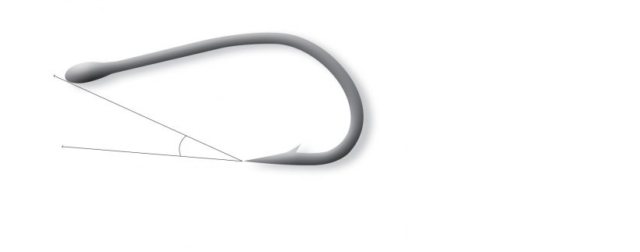
But what about adding a lazy person?

Carp Hooks - Size
The carp hook is selected based on the size of the boilie you are going to fish with.
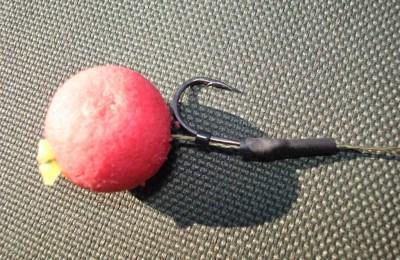
The hook hook width should be 2/3 of the boilie diameter.
If the hook is wider, there is a high probability that the fish will feel the coldness of the metal when it sucks in the boilie, and will immediately spit out the bait without having time to swallow the rig to the sting.
It is also better not to use models with too narrow a hem.
Because they may simply not catch on the carp's lip.
Where did each hook perform best?
Curve Shanks with long forend (Mugga, Curve Medium) - Ronnie rig, 360 rig
Long Shank with a long shank (Incizor or with thickened wire Korda Longshank) - Blowback rig Wide Gape rig (we use soft material with a curved sting and a stiffer material with a straight sting) - classic carp leader
Curve Shank - D rig
Chod Hook - Chod rig and Hinged Stiff rig equipment (chod rig with a bend made of regular leader material)
